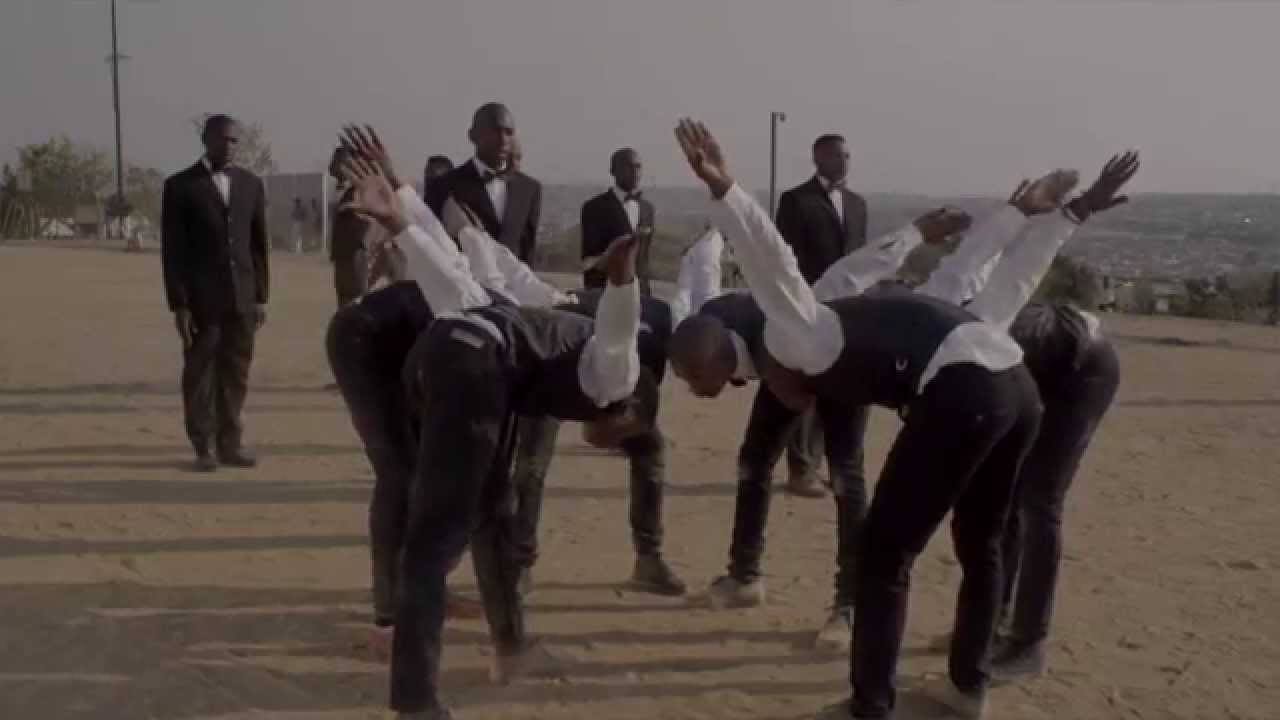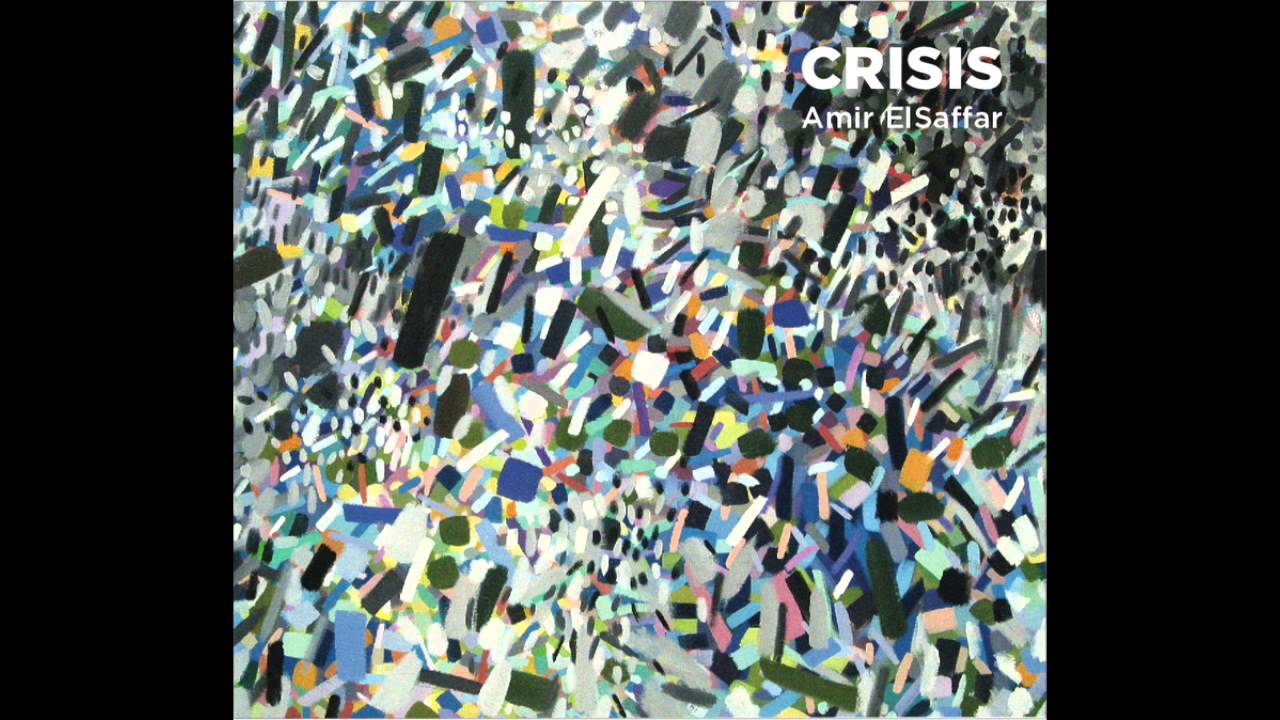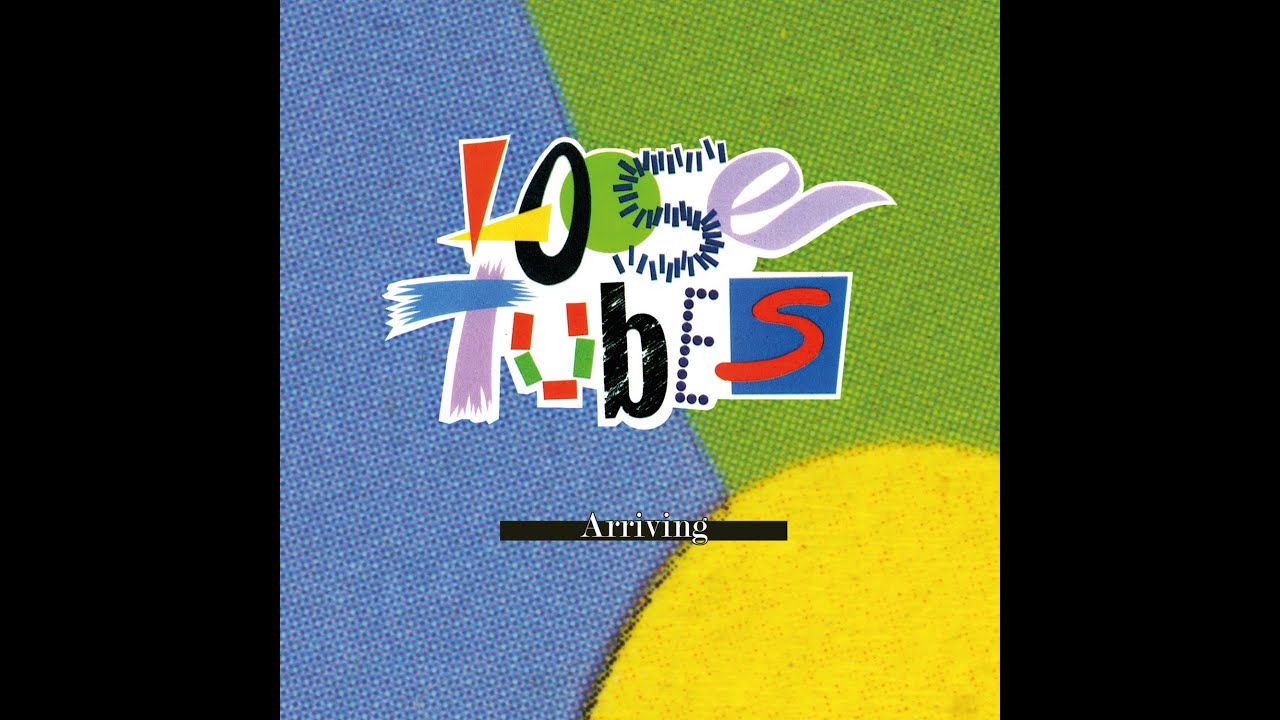Raise those bones to the sky and hail the coming of Autumn! The next few weeks offer an embarrassment of riches, with the EFG London Jazz Festival and Glasgow’s GIOfest leading the charge for excellent musical extravangzas. If any independent promoters are reading this, feel free to post your events in the comments below.
We’ll publish a more extensive preview of the EFG London Jazz Festival in the coming weeks, but to give you an initial heads up, here are a few highlights. Kamasi Washington’s Barbican show has unfortunately sold out, but there are plenty of tQ friendly acts to see over the fortnight. The Necks, whose excellent new album I review below, play a residency at Café Oto. Scroll down the page and you’ll also see me dancing a merry jig about the great new album from London’s Sons Of Kemet. They play Rich Mix on Friday 13. Fresh from her David Bowie collaboration, Maria Schneider and her orchestra play Cadogan Hall on Tuesday 17. There are also a number of tasty free events, including the terrific young London sax and drums duo Binker & Moses at Foyles on Saturday 21 and LUME’s afternoon of improvised music at the Barbican on Saturday 14, featuring Corey Mwamba, Rachel Musson, Colin Webster and Andrew Lisle.
Glasgow Improvisers Orchestra’s annual festival at the CCA features returning friends and new collaborators. Improvising piano greats Marilyn Crispell and Keith Tippett head up the bill, performing together in a new piece devised by GIO’s impish guitar wizard George Burt. Derby vibraphone ace Corey Mwamba joins the ensemble for the whole weekend and will also be leading a public workshop. Meanwhile, GIO’s newest member, cellist Atzi Muramatsu, has devised a piece inspired by Noam Chomsky’s Universal Grammar and Adam Linson’s new composition explores the links between music, painting and architecture.
Mary Halvorson – Meltframe
(Firehouse 12 Records)
New York guitarist Mary Halvorson is a Complete Communion favourite, with her trio album Reverse Blue being one of our albums of 2014. Her first solo effort, Meltframe sees her tackle different corners of the jazz songbook, including pieces by Annette Peacock, Carla Bley, Duke Ellington and Ornette Coleman. Halvorson has a distinctive sound, based around the clean, slightly stubbly tone of an archtop guitar, with judicious use of distortion, delay and pitch-shifting. Her playing incorporates intricate harmolodic runs, chordal vamps and math-metal riffing. As a result, ‘Peackock’s Blood’ sounds less bluesy and sensual than the original and more like The Melvins, while Oliver Nelson’s ‘Cascades’ is re-imagined as a baroque chamber recital beset by cackling rock goblins.
A protégé of Anthony Braxton, Halvorson might be seen as a rather cerebral player, but her gorgeous, imaginative takes on Ellington’s ‘Solitude’ and McCoy Tyner’s ‘Aisha’ do not lack emotional resonance. Her take on Ornette Colmean’s ‘Solitude’ is inspired, amplifying his music’s folk and blues elements by drawing on the American Primitive slide guitar playing of John Fahey and Jack Rose, all the while roughing it up with the physicality of a James Blood Ulmer or Sonny Sharrock. Carla Bley’s ‘Ida Lupino’ is given a more straightforward treatment, with Halvorson comping on rich, open chords and sketching subtle melodic embellishments in the spaces between.
Sons Of Kemet – Lest We Forget What We Came Here To Do
(Naim)
Sons Of Kemet’s 2013 debut Burn minted a fresh UK jazz sound, blending Barbadian and Jamaican traditions with elements of grime, gospel and fiery free jazz. Lest We Forget… continues their exploration of the sounds of the Afro-Caribbean diaspora, with drummers Tom Skinner and Seb Rochford cooking up lithe, trance-like grooves under Shabaka Hutchings’ reeds and Theon Cross’s sinuous tuba. This is groove-based jazz, but it moves to a different beat than old-school jazz-funk or the Dilla-inspired slugging of contemporary US jazzers like Robert Glasper and Thundercat. The rhythms plot points between Barbadian folk, Rastafarian drum circles and UK bass music, while the melodies move between the Caribbean, South Africa, Ethiopia and the Middle East. Far from being a gimmick, Cross’s tuba is essential to their sound, connecting reggae and dubstep to Caribbean marching band traditions with remarkable agility and wit. The two drummers more than justify their existence, trading intricate snare and hi-hat patterns, while leaving plenty of space for the music to move. On saxophone, Hutchings tends to play in the pocket, laying snappy, rhythmic phrases over the grooves, dropping multiphonics and tight free jazz squalls with a deft sense of timing. His bass clarinet snakes around the lower end of its register, contracting and springing loose in step with the music. While bursting with memorable tunes and irresistible rhythms, the album has serious cultural and political intent, with tracks referencing murdered Palestinian youth Samir Awad and Barbadian novelist George Lamming. ‘Long Night Of Octavia Butler’ and ‘Afrofuturism’ form a black science-fiction duology, with the band reaching new heights of rhythmic psychedelia. In the former, there’s a gorgeous shift from a funky march to a steppers’ delight , while in the latter, were plunged midway into an EQ-filtered wormhole, alighting at some Atlantis bashment party. Cross’s distorted tuba growls and throbs, while Skinner and Rochford lock into UK funky snare patterns. This is a gloriously contemporary album, offering a boundless vision of what UK music can be.
The Thing – Shake
(The Thing Records/Trost)
The Thing’s Shake might not quite offer the immediate pleasures of their great Neneh Cherry collaboration or their classic Lightning Bolt cover but it’s another beezer of an album from the Scandinavian trio – perhaps their finest to date. There’s always the worry that their punk-jazz shtick could become a stale gimmick, but Mats Gustaffson, Ingebrit Haker Flaten and Paal Nilssen-Love have a knack of bringing the noise every time. The sheer energy and physicality of The Thing’s sound is immensely satisfying, fusing the freedom of jazz with the controlled power of rock. When more mainstream jazzers cover rock songs, they tend to work from the melody and chord sequence, an approach that can sound a little glib and underpowered. The Thing, on the other hand, rightly focus on the riff, using it as the basis for improvisation.
Shake has only two rock covers: a super heavy take on Loop’s ‘The Nail Will Burn’ and the more reflective ‘Siggil’ by Wyrd Visions. The latter is by Toronto-based Colin Berg’s imagined Nordic free-folk outfit. These actual Scandinavians clearly approve, turning it into a candlelit psych-jazz invocation, with Gustafsson prowling menacingly over ritualistic gongs and a hypnotic bass-line that joins the dots between acid rock and Alice Coltrane. Nilssen-Love’s ‘Fra Jord Er Du Kommet’ goes deeper still into the ritual, with slow-burning saxophone drones and resonant metals. An odd waltz-like melody emerges, conjuring images of trolls dancing under the moon.
Dead Neanderthals – Worship The Sun
(Relative Pitch)
More heavy jazz, this time from Netherland’s Dead Neanderthals. While The Thing focus on riffs and relatively compact song forms, these tQ favourites are all about the monomaniacal pursuit of extreme sounds, taking an idea and stretching it to its limits. Last year’s Prime, a collaboration with British saxophonist Colin Webster, was precision controlled chaos at its most brutalising, channelling the freedom of the wildest free jazz into the linear attack of metal and grindcore. In contrast to that album’s sonic density, Worship The Sun occupies a perversely constricted tonal range, with saxophonist Otto Kokke obsessively working over maddening cycles of whistling and squealing altissimo. At various points, Kokke will expand into to flute-like ululations and honking low-end blats, but that shrieking kamikaze seagull is ever present, never wavering from its demented flight into the sun. Drummer Rene Aquarius’s busy ride cymbal is almost hard-bop, but his snare and toms salvos have the relentless forward motion of trash metal. The piercing tonalities and single-minded approach might prove too much for some listeners, but for fiends like us, it’s an absolute blast.
Mural – Tempo
(SOFA)
Oslo’s SOFA is a relatively new label dedicated to mutli-disc presentations of lengthy situational improvisations. Enough Still Not To Know, a 4CD set of John Tilbury and Keith Rowe’s extremely minimal live soundtrack for a Kjell Bjorgeenen video installation is one for a quiet night and a good single malt. Despite running to three discs and almost as many hours, Mural’s Tempo is more immediate, with moments of tension and release among its long, contemplative passages. Drawn from a four hour performance at the Rothko Chapel in Houston, Texas, Tempo brings together reedist Jim Denley, 12-string guitar and zither player Kim Myhr and percussionist Ingar Zach. We enter at the start of the second hour, the musicians having established their terms. There are occasional lapses into over-familiar free-improv tropes, but for the large part, this is an original and affecting performance, with the musicians’ individual voices blending into a unified whole. Denley conjures sussurus tones and controlled feedback moans while Ingar Zach is a highly inventive presence on percussion. Rubbing and tapping a mallet against the skin, he coaxes low resonant tones and squeaks from his gran cass (bass drum), occasionally laying a far-away pulse under Myhr’s gossamer string textures. The fourth element in the piece – Mark Rothko’s paintings – may be absent to home listeners, but Tempo is a vivid and compelling artwork in its own right.
The Necks – Vertigo
(ReR Megacorp/Northern Spy)
In contrast to Mural’s improv purism, the latest album from Australian trio The Necks is very clearly a studio creation, where the group’s improvisations have been carefully edited into an unfolding 43 minute narrative. In its use of pedal points and post-production, certain comparisons can be drawn with the approach of Miles Davis and producer Teo Macero on In A Silent Way and the proto-ambient dirge ofGet Up With It’s ‘He Loved Him Madly’. As Robert Barry notes in his Wire review, The Necks have often been tagged as minimalist, but Vertigo is noticeable for its maximalism. The album is more dramatic than meditative, building momentum through the juxtaposition of long, layered tones, crackling electronic interference and sudden jolts of percussion.
The mechanical purr of the Hammond organ’s Leslie rotating speaker is a near constant presence, moving in and out of the foreground of the mix while Chris Abrahams lays shifting chordal textures and distant piano thunder on top. Lloyd Swanton threads long grinding notes and phantasmal wisps of bowed bass through it all. A gnarled feedback hum rises and resolves into a pure electric tone, as Tony Buck drops clattering bombs of metallic percussion and twanging zither. These latter elements form a recurring motif, intensifying the sounds and taking the piece in new directions. Pulling back from the precipice, the trio find themselves in the ballroom of a ghost ship, with watery piano figures over creaking joists and chthonic static. The piece ends with the layering of glassy organ chords and spectral choirs, recalling the most gorgeous moments of Talk Talk’s Spirit Of Eden. There’s not easy resolution in the tonic, however, with Swanton’s creaking, snuffling bass and Buck’s telegram wire zither and scattered gongs adding to the heady sense of unease.
Amir ElSaffar – Crisis
(Pi Recordings)
Crisis is the outstanding new album from trumpeter Amir ElSaffar, an American of Iraqi descent. A non-hierarchical fusion of Iraqi maqam and jazz, Crisis is a work of rare beauty and power, with ElSaffar playing and singing over a bustling mix of post-bop and Arabic rhythms. Tareq Abboushi’s buzuq and Zafer Tawil’s oud add tension and bite to jazz pieces like ‘Flyover Iraq’ and delicacy to the maqam ‘Aneen (Weeping)’ and ‘Love Poem’. The solo trumpet lament ‘Taqsim Saba’ is followed by ‘El-Shaab (The Prophet)’, a driving group performance which pays oblique tribute to the Arab Spring.
Loose Tubes – Arriving
(Lost Marble)
It’s easy to see why Loose Tubes are so revered in certain quarters: armed with serious chops, whimsical English humour, and an idiosyncratic take on jazz history, Django Bates’ big band showed a new way forward for British jazz in the 1980s. Arriving pairs recordings from their farewell residency at Ronnie Scott’s in 1990 with three new tunes from their 30th anniversary gig at the same venue in 2014. From the 1990 set, Bates’ ‘Armchair March’ is a good representation of their style: bright tunes, knotty arrangements, and cavalier ensemble playing that walks a tightrope between freedom and control. The 80s jazz-funk of Eddie Parker’s ‘Children’s Game’ has dated less well, but Paul Edmond’s terrific trumpet solo is worth hanging around for. Chris Batchelor’s ‘The Wolf’s Dream And The Wild Eye’ is a deft take on Balkan brass, while Bates’ ‘Nights At The Circus’ is an audacious music hall romp, complete with pratfalls, trapeze acts, and elephants on stilts. Fast forward to 2014 and the group have matured in the right way, revisiting their old sound while drawing on subsequent solo adventures. Bates lives out his Mahavishnu Orchestra fantasies on ‘Bright Smoke, Cold Fire’. After several minutes of wiggy keyboard fantasies, a portentous King Crimson-like riff rises Kraken-like from the brisk fusion groove. Steve Buckley emerges as the hero of the piece, with an extended tenor sax solo that brings the fire the piece needs. The opening of Batchelor’s ‘Creeper’ recalls the greatest UK-based big band of them all, Chris McGregor’s Brotherhood of Breath, with one half of the horn section holding down the stately melody while other half competes with the guitar and rhythm section to break through the ozone layer. After this initial rush, the piece settles into a more elegant mode, with a great solo feature for saxophonist Julian Argüelles and some burnished Iberian folk themes reminiscent of Charlie Haden and Carla Bley’s great Liberation Music Orchestra.





